Which Metal is Best for an Engagement Ring?
Choosing an engagement ring in Toronto represents your first shared step toward eternal love. When we look past the diamonds, we encounter another essential decision. Your stone will be enveloped by metal as it journeys onto your beloved’s finger for many years ahead. Platinum and gold serve as powerful engagement ring metals, which have distinct histories encoded with unique characteristics and deep sentimental value. The difference between platinum and gold as cut stones for rings becomes clear through their unique looks, along with durability factors and maintenance needs that shape the ideal ring selection for your specific romantic journey.
Platinum and Gold: An Overview
Platinum is a naturally white precious metal that reaches optimal jewellery purity at 95% (against gold’s typical purity range of 58.5% to 75%). Platinum exists in minute amounts within the Earth’s crust, making it thirty times rarer than gold, thus elevating its reputation and market value.
People have been drawn to gold through the ages because of its radiant appearance combined with its easy mouldability. Platinum undergoes alloying processes with additional metals to make different karatage combinations and colour variations, including white, yellow and romantic pink shades.
During the Art Deco period (1920s-1930s), platinum became trendy because its contemporary shape flawlessly matched the geometric jewellery styles of that era. Wedding and engagement rings have used gold as their choice of metal since ancient Egypt to symbolize eternal love.
The symbolism of these metals runs deep. Platinum represents endurance and rarity—qualities many see mirrored in extraordinary love. Its unchanging white lustre suggests lasting commitment. Gold symbolizes warmth, prosperity, and tradition, its rich heritage connecting your modern love story to thousands of years of human devotion. The metal you choose doesn’t just hold a gemstone—it carries meaning that will resonate throughout your marriage.
Appearance: How Platinum and Gold Look
The natural silvery-gray appearance of platinum reveals a muted, sophisticated light that people often describe as “icy.” The contemporary aesthetic of platinum helps diamonds reflect less colour while demonstrating their authentic brilliance and fire. What you see with a platinum engagement ring is what you get—its colour remains consistent throughout the metal and throughout time.
Gold offers remarkable versatility with its three popular variants:
- Yellow gold radiates a warm, traditional glow that complements vintage designs and warmer skin tones
- White gold provides a bright, reflective surface similar to platinum but with a slightly warmer undertone
- Rose gold offers a romantic, blush-pink hue that makes a distinctive statement while complementing all skin tones
The most pronounced difference appears between white gold and platinum. While both present a similar appearance initially, white gold achieves its silver-white look through rhodium plating over a naturally yellowish metal. Plating gradually wears down to show underlying warm hues, and needs periodic restoration procedures for the original brilliance to remain evident. Platinum preserves its white appearance naturally without needing treatments, and its sheen evolves into a unique patina.
Durability and Strength
When it comes to precious metals, platinum dominates the durability category. Platinum, being 60% denser than gold, produces an intense ring feeling that safeguards fragile gemstones. Platinum develops a “patina” appearance through displacement of metal during scratches, which jewellers refer to as the character-building evolution of rings.
The higher karatage content of 18K (75% pure) and 22K (91.7% pure) gold makes it softer than platinum. Gold rings tend to wear down from regular use because they are more susceptible to scratches and tend to shed small metal particles through regular abrasion. However, this softness offers advantages: Simple buffing allows you to restore gold rings to their pristine condition while resizing and repair become possible due to their flexibility.
For everyday wear, platinum provides unmatched protection for precious stones. Its strength makes it the ideal choice for intricate settings with delicate prongs or tension-set designs. 14K gold, which contains 58.5% pure gold, continues to exhibit outstanding durability through bezel and channel mount protective settings. Those with physical work or active lifestyles often prefer platinum’s durability, while those who need light jewellery tend to like the ease of wearing gold.
Price Comparison: Platinum vs Gold Engagement Ring
The premium price of platinum stems from its limited supply combined with its material density. Platinum rings made from 95% pure platinum material outweigh gold rings by weight and purity, so they normally cost 40-50% more. A platinum setting will typically enhance the price of a gold engagement ring by $500 to $1000.
Due to rhodium plating requirements, white gold maintains higher costs than yellow and rose gold, which are more affordable options. The purity levels expressed in karats determine the price series of gold. 14K gold stands as the most cost-effective variety, but it lacks the strength and deep hue available in 18K gold.
An initial investment in platinum rings may pay off in reduced costs for ring maintenance throughout the years. Meanwhile, gold’s lower entry price makes it possible to invest more in the quality or size of your center stone. Both metals maintain excellent resale value, with fluctuations generally following market conditions rather than the metal type itself.
Maintenance and Care
Platinum develops a characteristic patina over time—a subtle matte finish that many owners cherish as uniquely theirs. Unlike gold, which loses small amounts of metal when scratched, platinum merely redistributes when abraded, maintaining its weight and integrity. For those who prefer platinum’s original high polish, professional refinishing can restore its mirror-like shine. This service is needed less frequently than white gold’s maintenance, usually every few years, depending on wear patterns.
The upkeep needs of gold items demand greater focus, with white gold needing frequent rhodium plating maintenance. Normal wear and tear causes the rhodium plating of white gold to fade until golden tones within the metal become visible. The bright finish of white gold requires replating every 1 to 2 years. Yellow and rose gold require periodic polishing sessions to avoid surface scratches and maintain their sparkling appearance.
Over a 20-year period, white gold’s maintenance costs often exceed platinum’s, despite gold’s lower initial price. Periodic check-ups of precious rings are appreciated by certain owners, viewing them as opportunities to have their cherished rings receive professional ring cleaning and inspection services while experts ensure stones remain safely mounted.
Platinum vs Gold: Pros and Cons at a Glance
Platinum or gold for engagement rings?
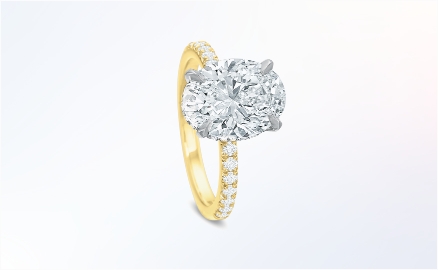
Pros of Platinum:
- Naturally hypoallergenic, ideal for sensitive skin
- Superior durability with minimal metal loss over time
- Naturally white colour that never needs replating
- Exceptional security for holding diamonds and gemstones
- Prestigious rarity and a weightier feel on the finger
- Develops character through a distinctive patina
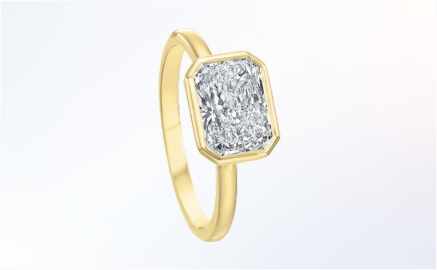
Cons of Platinum:
- Significantly higher initial investment
- Heavier weight may feel uncomfortable to some wearers
- More difficult and expensive to resize or repair
- Scratches more visibly (though without metal loss)
- Limited colour options (only available in white)
- Professional cleaning recommended to restore shine
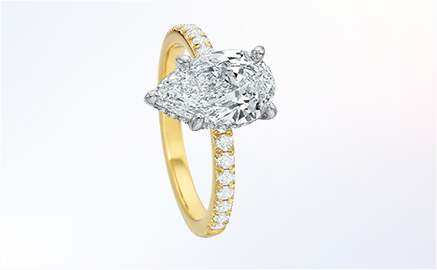
Pros of Gold:
- More affordable price point
- Versatile colour options (yellow, white, and rose)
- Lighter weight for comfortable everyday wear
- Easier to resize, adjust, or repair over time
- Centuries of traditional symbolism
- Simple home polishing can maintain the appearance
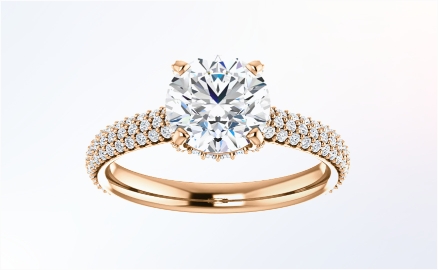
Cons of Gold:
- White gold requires periodic rhodium replating
- Less durable, with gradual metal loss through wear
- Higher karatages (more pure gold) scratch more easily
- May cause allergic reactions in sensitive individuals
- Less secure for holding precious stones long-term
- Prone to thinning over decades of continuous wear
Which Metal Should You Choose for Your Engagement Ring in Toronto?
Finding your perfect metal match depends on several personal factors:
- Budget considerations:
If maximizing your diamond size within a set budget of engagement rings is your priority, gold (especially 14K yellow or rose) allows more investment in the gemstone. If long-term value with minimal maintenance appeals to you, platinum’s higher upfront cost might balance out over decades.
- Lifestyle compatibility:
Platinum’s durability assures users with active lifestyles of lasting durability. People who work with their hands should choose platinum as it withstands metal loss, whereas individuals who prefer lighter weight will favour gold.
- Aesthetic preference:
When choosing a wedding band, examine how different colours look with your gemstone and your natural skin colour. Cold-toned gemstones show their best colours when set in platinum, whereas yellow gold brings out the best in heat-toned gems.
- Skin sensitivity:
People with metal allergies should choose platinum rings, given the hypoallergenic material. Nickel-free white gold remains sensitive to people with severe skin allergies.
Quick recommendation guide:
- For maximum durability with minimal maintenance → Platinum
- For tradition with warmth and versatility → Yellow Gold
- For romance with a distinctive look → Rose Gold
- For a platinum look with a lower budget → White Gold
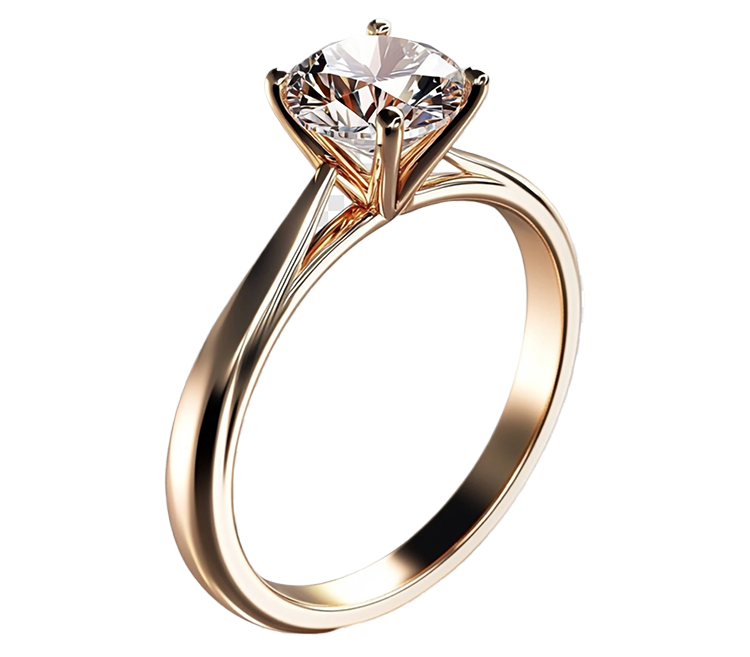

What Our Client Say About Us

Frequently Asked Questions
Platinum provides superior durability with natural white colour that lasts, while gold offers various colour options and lighter weight at a lower cost. The final choice you make should consider your objectives in life and financial capabilities, in addition to your individual tastes.
Yes, platinum shows scratches more prominently at first, but the scratches become a charm after some time, as it does not lose any of its metal. It only moves the metal around, giving it a character-rich patina. Gold may appear to resist scratching, but it actually loses small amounts of metal over time.
The density of platinum exceeds gold by 60 percent. A platinum ring weighs substantially heavier than a gold ring of similar design, which appeals to some users but becomes cumbersome to others.
No. White gold starts similar to yellow gold but undergoes a process of rhodium plating on top of its yellow gold base with white metal alloy. This coating requires regular maintenance. Platinum keeps its pure white appearance by nature without requiring any plating process for colour conservation.
Platinum proves to be the best metal for securing gems because it offers exceptional strength and extended durability when used in prong settings. A characteristic of platinum’s material makes prongs durable, so valuable diamonds maintain better security for longer periods.
Rhodium replating is required approximately every 1-2 years for white gold, but the frequency depends on personal habits, skin reactions and potential chemical exposures. People who engage in active sports, swim regularly, or use hand sanitizers need to have their white gold replated at a more frequent rate.
For many couples, yes. Platinum’s durability, hypoallergenic properties, and reduced long-term maintenance often justify its higher initial investment. Those valuing lifelong wear without significant metal loss find platinum worth the value, particularly for protecting valuable center stones.
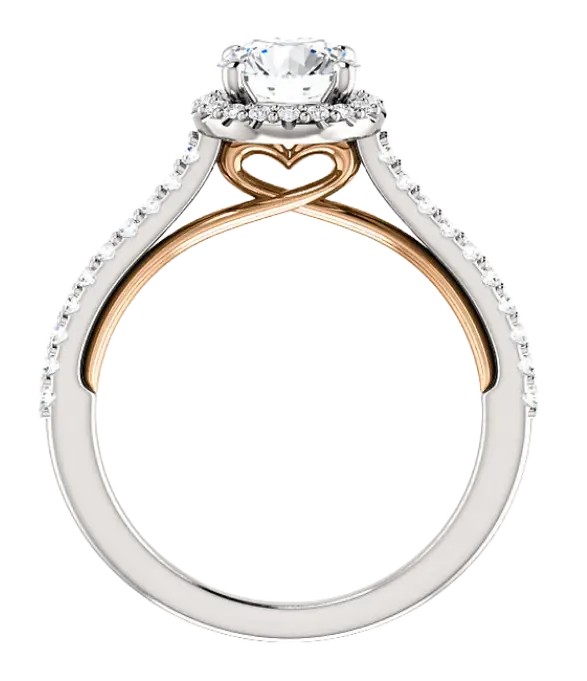
Get in Touch
Loved one of the styles above but want it customized. Email us below with the style, your desired metal and gemstone colour and we will make it happen!

